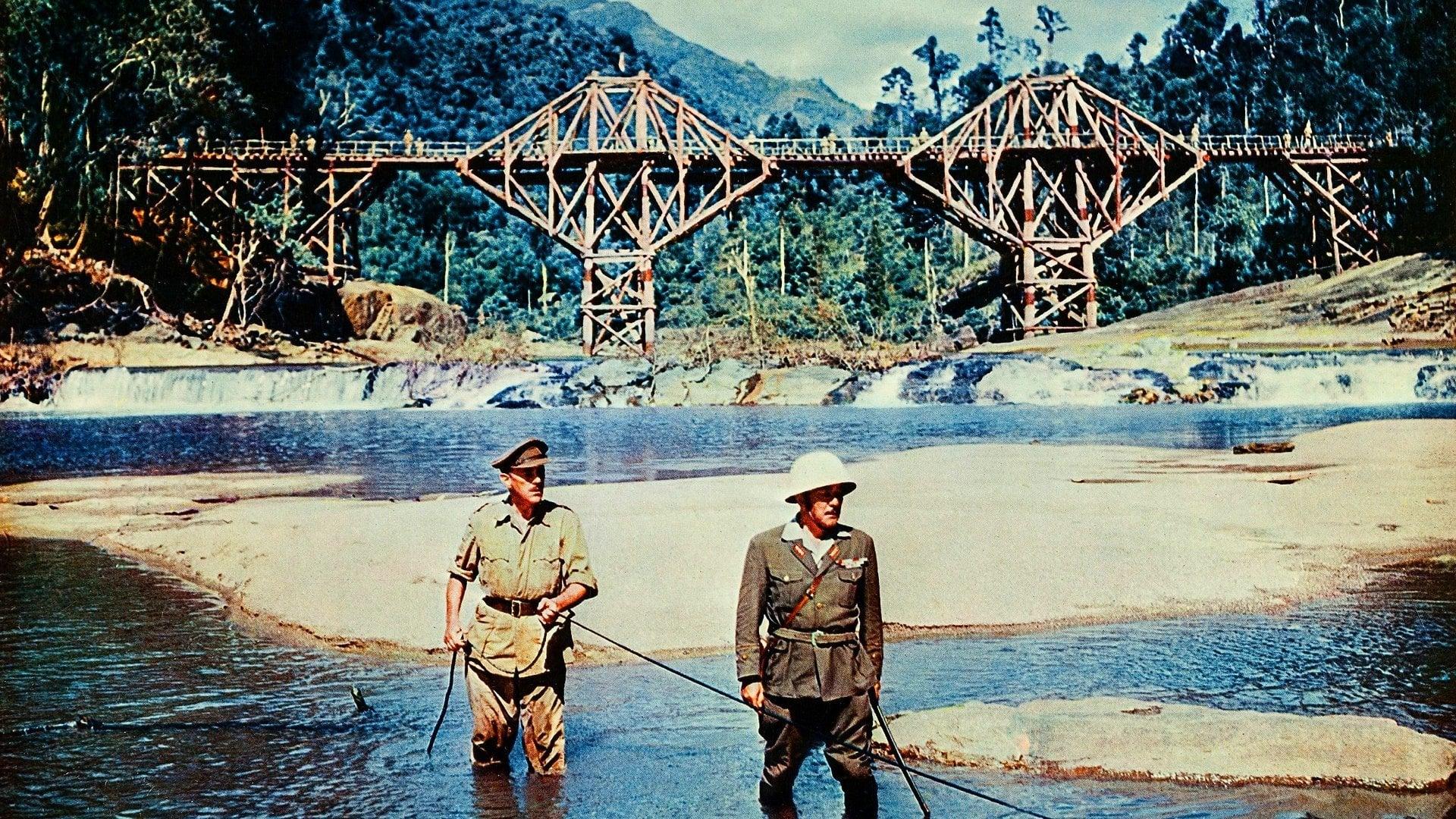The Bridge on the River Kwai
by Robbo
Posted on 8 June 2021

Rating -
The Bridge on the River Kwai is a 1957 epic war film directed by David Lean and based on the 1952 novel written by Pierre Boulle. The film uses the historical setting of the construction of the Burma Railway in 1942–1943. The cast includes Alec Guinness, William Holden, Jack Hawkins, and Sessue Hayakawa.
It was initially scripted by screenwriter Carl Foreman, who was later replaced by Michael Wilson. Both writers had to work in secret, as they were on the Hollywood blacklist and had fled to the UK in order to continue working. As a result, Boulle, who did not speak English, was credited and received the Academy Award for Best Adapted Screenplay; many years later, Foreman and Wilson posthumously received the Academy Award.
In early 1943, British POWs arrive at a Japanese prison camp in Burma, led by Colonel Nicholson. One of the other prisoners he meets is Commander Shears of the U.S. Navy, who describes the horrific conditions.
Colonel Saito, the camp commandant, informs the new prisoners they will all work, even officers, on the construction of a railway bridge over the River Kwai that will connect Bangkok and Rangoon. Nicholson objects, informing Saito the Geneva Conventions exempts officers from manual labour.
Shears escapes and is wounded. He wanders into a Siamese village, is nursed back to health, and eventually arrives in the British colony of Ceylon.
With a deadline for completion in May, the work on the bridge is a disaster. The prisoners work as little as possible and sabotage what they can. Nicholson is shocked by the poor job being done by his men and orders the building of a proper bridge, intending it to survive the war and stand as tribute to the British Army’s ingenuity for centuries to come.
Shears is enjoying his hospital stay in Ceylon when British Major Warden invites him to join a commando mission to destroy the bridge before it is completed. Shears tries to get out of the mission by confessing that he impersonated an officer as a POW, expecting better treatment from the Japanese. Warden responds that he already knew and that the U.S. Navy had agreed to transfer him to the British Army, along with Shears receiving a commission of major, to avoid embarrassment. Realising he has no choice, Shears volunteers.
The commandos parachute into Burma. Warden, Shears, and Joyce reach the river in time with the assistance of Siamese women bearers and their village chief, Khun Yai. Under cover of darkness, Shears and Joyce plant explosives on the bridge towers. A train carrying important dignitaries and soldiers is scheduled to be the first to cross the bridge the following day, and Warden’s goal is to destroy both.
The Bridge on the River Kwai is a strange film. Neither for or against war it details one man’s struggle to retain order and sanity amongst his men.
Colonel Nicholson is a complex and flawed character. An absolute stickler for the rules and stubborn yet fallible.
The rules make him order his men not to escape, his pride has him attempt to build a better bridge than the Japanese could have, yet in the end he realises what he has done and acts heroically.
The Bridge on the River Kwai is a large scale gripping drama, expertly directed by David Lean who was well deserving of his Academy Award for Best Director. Although despite rumoured clashes with Alec Guinness he really does get the best out of the actor who won the Academy Award for Best Actor.
The Bridge on the River Kwai is worth two and a half hours of anybody’s time.
Leave a Reply